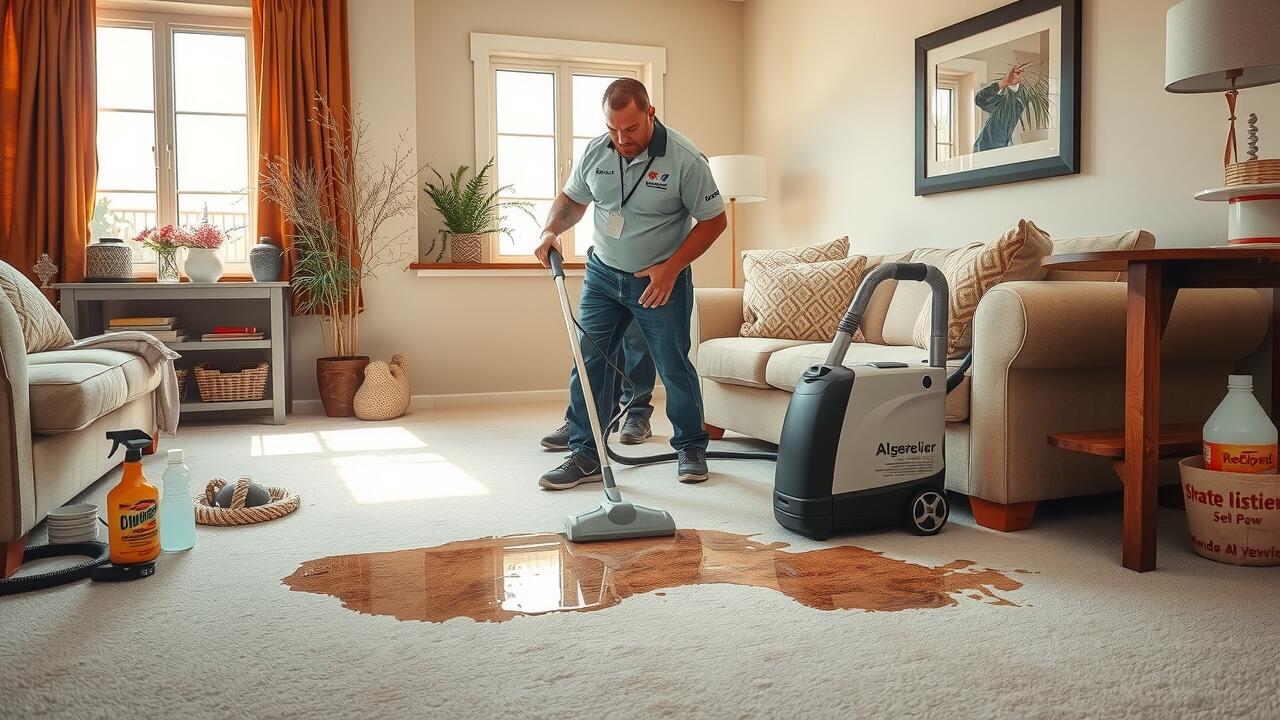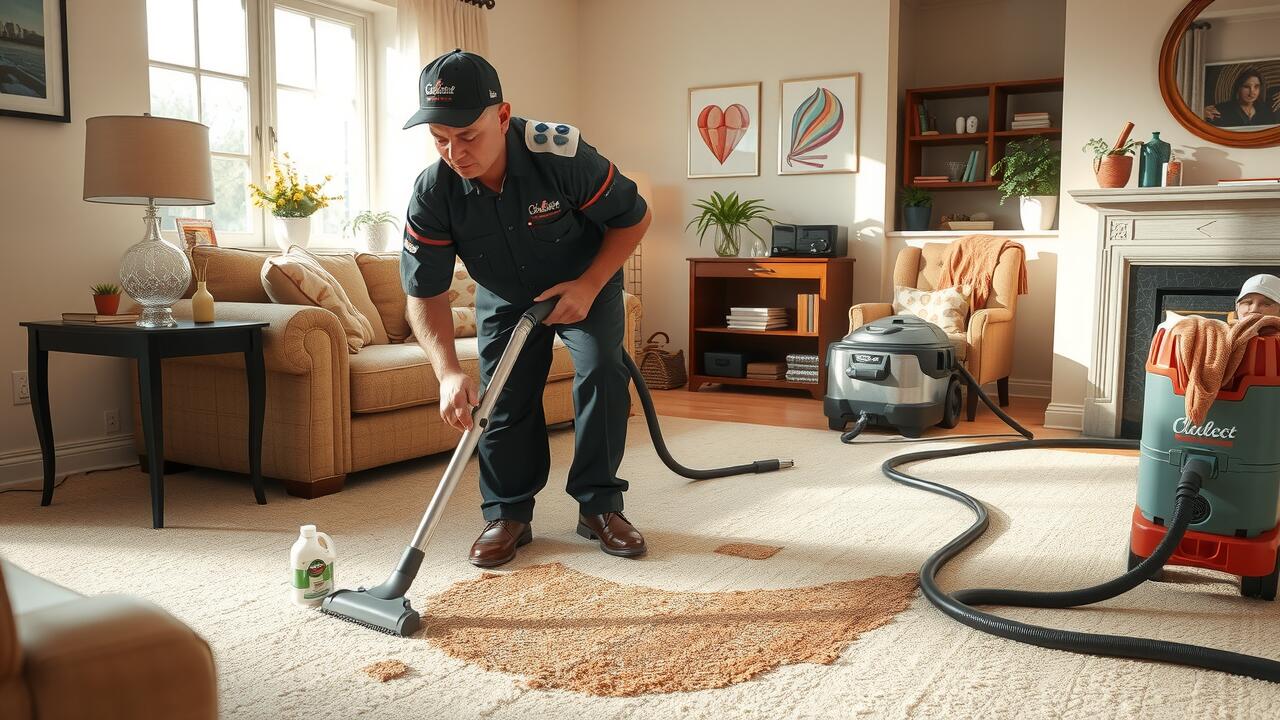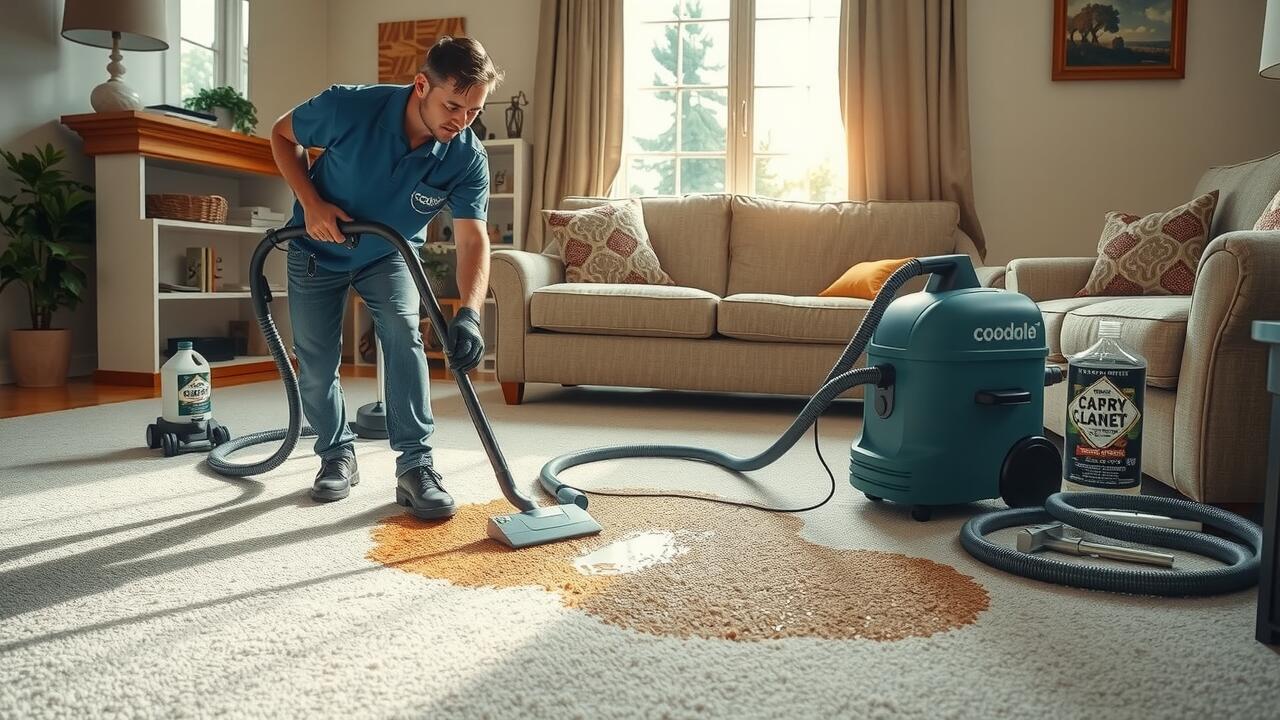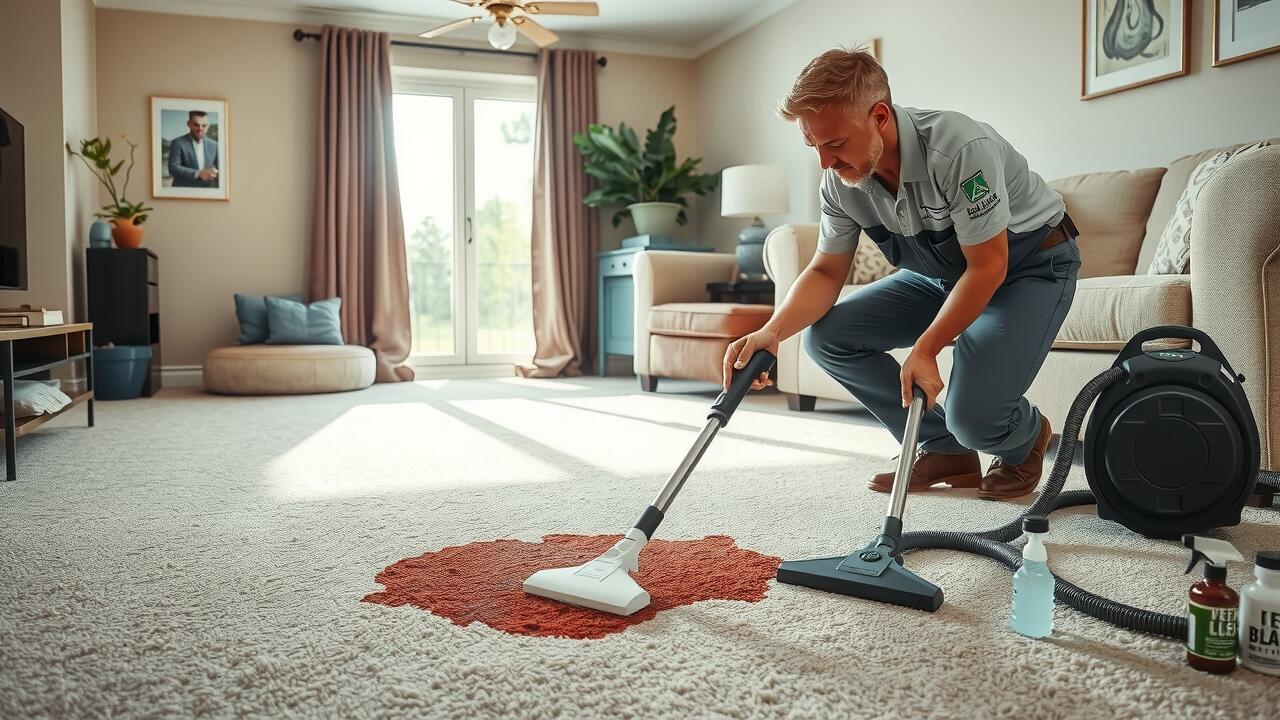Table Of Contents
Application Techniques for Stain Removal
Effective carpet stain removal requires a careful approach to ensure that the carpet fibers are not damaged in the process. Start by addressing spills promptly before they set. Blot the stain gently with a clean, dry cloth or paper towel to absorb any excess liquid. Rubbing the stain can push it deeper into the fibers, making it harder to clean. After the initial blotting, apply a suitable stain removal solution directly to the affected area, following the product instructions for best results.
Different stains may require different methods for effective carpet stain removal. Some stains respond well to dabbing, while others might need gentle scrubbing. It’s important to test any cleaning solution on an inconspicuous area of the carpet first to ensure it does not affect the color or texture. Continue to blot the stain until it lifts, and rinse the area with clean water to remove any residue left by the cleaner. Regular maintenance and prompt reactions to spills can significantly enhance the longevity and appearance of your carpet.
Step-by-Step Guide to Proper Stain Treatment
Begin by addressing the stain as soon as possible. Blot the area with a clean, dry cloth to absorb excess liquid without rubbing, which can push the stain deeper into the fibers. For solid stains, scrape off any residue gently using a blunt knife or spoon. After that, choose an appropriate carpet stain removal solution based on the stain type, whether it’s from food, drink, or pet accidents. Always test the cleaner on an inconspicuous area first to ensure it won’t discolor the carpet.
Next, apply the carpet stain removal solution directly onto the stain. Use a clean cloth to dab the solution, working from the outside edges toward the center to contain the stain. Allow the solution to sit for a few minutes to loosen the stain particles. Rinse the area with cold water and blot dry with another clean cloth. Repeat the cleaning process if necessary, as some stains may require multiple treatments.
Preventing Future Carpet Stains
Preventing future carpet stains requires a proactive approach to keep carpets looking fresh. Regular vacuuming helps remove dirt and debris that can contribute to stains. Homeowners should also consider using area rugs in high-traffic zones, as these can absorb spills and protect the underlying carpet. Additionally, applying a carpet stain removal treatment can create a barrier against potential stains, making it easier to clean up any accidents that do occur.
Education on proper cleaning techniques is essential for maintaining carpet cleanliness. Always address spills promptly with appropriate blotting techniques rather than rubbing, which can worsen the stain. Keep cleaning solutions on hand that are specifically designed for carpet stain removal. This preparation not only makes it easier to handle unexpected messes but can also save time and effort in the long run.
Best Practices for Maintaining Carpet Cleanliness
Regular cleaning is essential for maintaining carpet cleanliness and extending the life of your flooring. Vacuuming at least once a week helps remove dirt, dust, and debris that can build up and cause stains. Spot cleaning any spills immediately, combined with a suitable carpet stain removal product, can prevent tougher stains from setting in. Rotating furniture periodically can also help avoid excessive wear on high-traffic areas, preserving the visual appeal of the carpet.
In addition to routine cleaning, placing doormats at entrances can reduce the amount of dirt tracked indoors. Utilizing area rugs in high-use spaces can serve as a protective barrier while also allowing for easier cleaning. Teaching family members and guests about appropriate food and drink habits around carpets minimizes potential stains. Together, these practices foster a cleaner environment and significantly reduce the need for extensive carpet stain removal.
Comparing Stain Removers
When it comes to carpet stain removal, the choice between liquid and foam formulations can significantly affect the effectiveness of the process. Liquid stain removers are often more versatile and can penetrate deep into the fibers of the carpet. They find favor in treating a wide range of stains, from spills to pet accidents. Their ability to cover large areas quickly makes them a popular choice for bigger messes. However, they can also lead to oversaturation if not applied carefully.
Foam stain removers, on the other hand, provide a targeted approach to carpet stain removal. The thick consistency allows for more controlled application, reducing the risk of excessive moisture. This format is particularly useful for spot treatments on smaller stains. The foam expands to lift the stain while also acting as a dirt magnet. Nonetheless, it may not be as effective for deeper or older stains that have set into the carpet fibers over time. Understanding these distinctions can help in choosing the right product for your specific cleaning needs.
Pros and Cons of Each Formulation
Liquid stain removers are popular choices for carpet stain removal due to their ease of application. They typically penetrate fabric fibers quickly, dissolving stains effectively. This formulation is often more versatile, allowing users to mix it with water for varying concentrations based on the severity of the stain. However, excessive moisture can sometimes lead to oversaturation, potentially damaging carpet backing or leading to mold growth if not dried properly.
Foam stain removers also have advantages, particularly in their ability to reduce overspray and control the amount applied to a specific area. They tend to lift stains without excessive water, which is beneficial for delicate carpets or those prone to discoloration. On the downside, foams may take longer to dry and penetrate stubborn stains less effectively than liquid formulations. The choice between these types often hinges on the nature of the stain and the type of carpet being treated.
FAQS
What is the most effective stain remover for carpets?
The most effective stain remover for carpets depends on the type of stain. Enzymatic cleaners are great for organic stains like food and pet messes, while solvent-based cleaners are better for grease and oil stains. Always test a small area first to ensure compatibility with your carpet.
How can I remove a stubborn stain from my carpet?
For stubborn stains, start by blotting the area with a clean cloth to absorb as much of the stain as possible. Then, use a stain remover specifically designed for the type of stain you are dealing with. Follow the application instructions closely and consider repeating the process if the stain persists.
Are homemade stain removers effective for carpets?
Yes, homemade stain removers can be effective for carpets. A mixture of vinegar and baking soda or dish soap and water can work well for various stains. However, always test a small area first to avoid any potential damage to your carpet.
How often should I clean my carpet to prevent stains?
It’s recommended to vacuum your carpets at least once a week and deep clean every 6 to 12 months. Regular maintenance can help prevent stains and keep your carpets looking fresh.
Can I use laundry stain removers on my carpet?
While some laundry stain removers can be used on carpets, it’s important to check the label for compatibility. Some products may contain ingredients that could damage the carpet fibers or cause discoloration. Always test a small area first before applying a laundry stain remover to your carpet.



